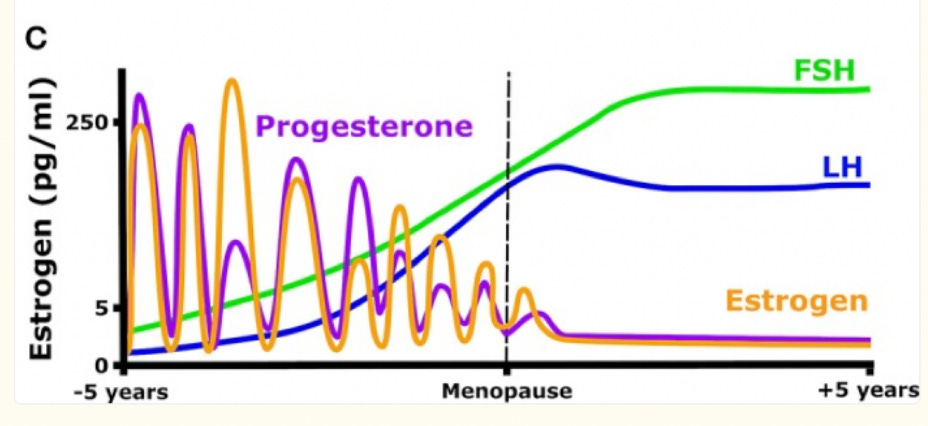
Hello, Brain Health Ambassadors. I am writing to you from the screened-in porch of my home in the desert in New Mexico. I love writing here in the early morning while I savor my daily coffee. I have been so immersed in today’s topic that our local hummingbird is barely distracting me as she swings by to check out the aloe vera blooms.
Did you know that a niche of gut bacteria is dedicated to metabolizing estrogen in the body? As you will see, the estrobolome is a fascinating topic, one that I think you will enjoy. And men, if you think this doesn’t pertain to you, read on. Research indicates that there’s probably a testosterobolome, too.
Today’s newsletter is the fourth in our series about the gut-brain-axis. If you are just joining us, catch up by reading these posts:
Should You Be Taking Probiotics For Your Brain? (a guest post by
of )4 Key Things Fiber Does For Your Brain
Don’t miss out on the discount Dr. Emily is offering BHK subscribers on her Substack Second Brain—good now through April 21, 2025.
Estrogen 101
Before we dive into the estrobolome, let's cover some key points about estrogen. Estrogen is not one thing—it’s a family of sex hormones associated primarily with women. Within this family, there are numerous types. Some, like estriol, are weak estrogens.
Estradiol, on the other hand, binds tightly to many estrogen receptors, especially the brain where it:
Enhances neurotransmitter release and sensitivity (ie dopamine, acetylcholine)
Increases cerebral blood flow
Boosts cognition: enhances attention, executive function, processing speed, learning and verbal memory
Once an estrogen has circulated through the body and done its designated job, it ends up in the gut.
What is the estrobolome?
When I taught the Women’s Brain Health students about the gut microbiome this semester, I used the analogy of a bustling LEGO factory. Imagine trillions of tiny workers busy assembling, organizing, and fine-tuning every piece that comes down the line. It’s an entire microscopic workforce constantly talking to your brain, influencing your mood, focus, and even long-term brain health. When everything runs like a well-oiled machine, you feel energized, clear-headed, and balanced. But if the factory falls into chaos—perhaps due to stress, poor diet, or lack of sleep—the signals get scrambled, and both the gut and brain suffer.

In our LEGO analogy, the estrobolome is a workshop in the factory where a pod of specific bacteria specialize in recycling estrogen. Estrogen receptors have been found in virtually every organ in the body, which means this hormone performs specific functions not just in the female reproductive organs, but also in the brain, muscles, joints, eyes, and even the kidneys. Any circulating estrogen that doesn’t get used in the rest of the body ends up in the gut to be packaged up for excretion.
That’s where the estrobolome workers come in. They synthesize enzymes (such as β-glucuronidase) that reactivate estrogen and send it back out into circulation for a second pass around the body. This serves as a checks and balance system for keeping the body supplied with different forms of estrogen. And it’s thought to ramp up excretion of estrogen during times of imbalance, such as perimenopause.
What happens to the estrobolome at perimenopause?
Perimenopause—the years-long transition phase that leads up to the final menstrual period (menopause)—is a time of wildly fluctuating hormone levels. Estrogen, in particular, can go from supranormal highs to rock-bottom lows. All this change can set up dysbiosis in the gut, an imbalance of beneficial and harmful gut microbiota. Declining estrogen creates a vicious cycle in which the estrobolome can’t keep up with the demand to send estrogen back out into circulation. WIth less estrogen around, the brain becomes vulnerable to inflammation and a woman may experience brain fog.
Cultivating a thriving estrobolome
The good news is that a healthy, stable, and diverse estrobolome can mitigate the highs and lows of estrogen fluctuations. This can have a positive impact on mood, weight, and overall brain health, helping women navigate the transitions of perimenopause and menopause more smoothly.
So, how do we keep our microscopic workforce happy and productive? Here’s what Dr. Lisa Mosconi, neuroscientist and author of The Menopause Brain has to say:




